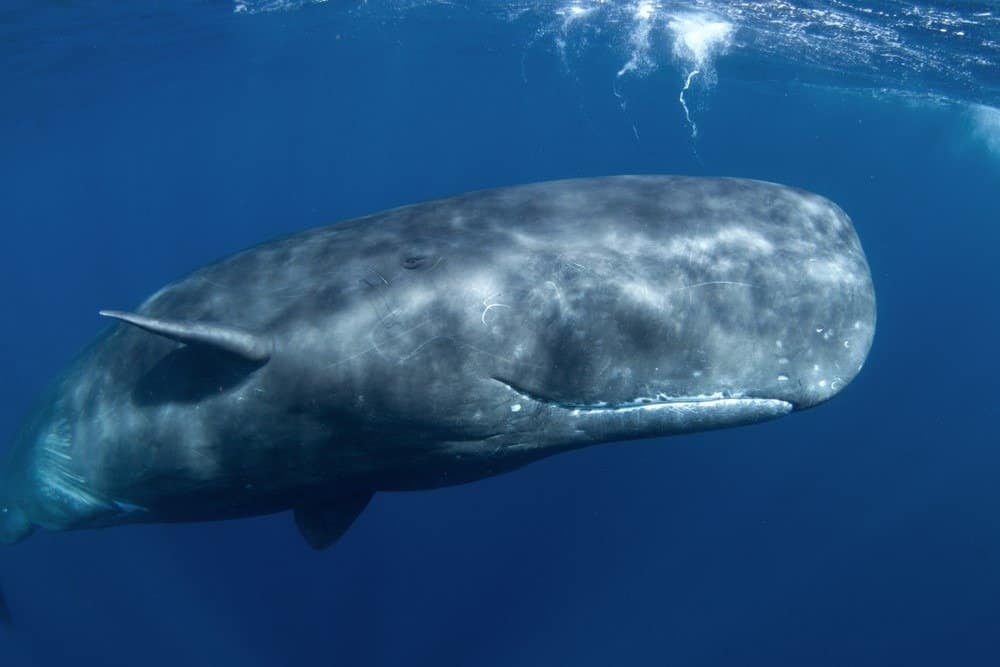You would be forgiven for thinking that this is a clip of several submarines that had a terrible accident and were drifting vertically in the ocean! This is how sperm whales sleep. In this incredible and peaceful clip, we glimpse these beautiful creatures as they are resting. As sleeping positions go, this is pretty unique!
Watch the Incredible Clip Now
Where Do Sperm Whales Normally Live?
Sperm whales are found in deep ocean waters all over the world. They are generally not seen at the polar ice fields. They seem to prefer temperate and tropical waters. Occasionally, they have been spotted near the coastlines of the Gulf of Mexico, although they are not as common here as they once were. These amazing animals can be found two miles underwater. They have to surface now and again to breathe air, so they are limited by how long it takes them to swim down and back up again. These whales can stay submerged for over an hour, and when they resurface, they can blow up to 70 times before heading back under the water.
They are also most likely to be found where there is plenty of food, mainly squid. These are often located in areas of cold water upswellings.
Is This How Sperm Whales Normally Sleep?
Sperm whales do not always sleep in a vertical position. Quite often, they are seen sleeping horizontally and close to the surface. However, scientists believe they enter a deep sleep state when they are vertical and drift just under the water’s surface. They do this in groups and rest for between 10 and 15 minutes at a time. Research has shown that they do not breathe when they are relaxing and do not move at all. However, they do not sleep often and spend about 7 percent of their day asleep.
Sperm Whale Population: How Many Are Left in the World?

Sperm whales are classified as vulnerable, although their exact numbers are unknown.
©Martin Prochazkacz/Shutterstock.com
The IUCN currently classifies the sperm whale as vulnerable, although it was last assessed in 2008. The exact current global population is not known. However, we do know that the populations face significant threats. One of these is from transportation, in particular shipping lanes. They are also challenged by fishing and pollution. Studies are underway to determine whether using acoustic decoys and alternative fishing techniques could further protect them.
The photo featured at the top of this post is © wildestanimal/Shutterstock.com
Thank you for reading! Have some feedback for us? Contact the AZ Animals editorial team.







